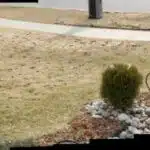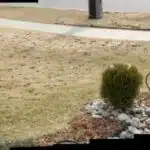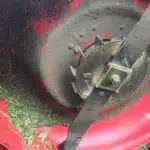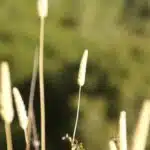Centipede grass is a popular lawn grass in the southeastern United States, from Texas to North Carolina. It is known for its low maintenance requirements and deep green color. As with any living organism, proper care and attention are necessary for keeping your centipede grass healthy and strong. This article will provide an overview of how to properly care for and grow centipede grass.
Second Paragraph: For those interested in a beautiful and low-maintenance lawn, centipede grass may be the perfect option. Its deep green color makes it stand out among other varieties of grasses. It also requires less fertilizer than most other types of grasses. Additionally, it has excellent heat tolerance which makes it perfect for warmer climates such as the southeastern United States.
Third Paragraph: With its ease of growth, low maintenance requirements and attractive green hue, centipede grass is an ideal choice for creating a stunning lawn in any part of the country. With just a few simple steps and some basic knowledge about planting and caring for this type of turfgrass, you can have a lush lawn that will bring beauty to your landscape year-round! In this article we will discuss the basics of growing and caring for centipede grass so that you can enjoy its many benefits without feeling overwhelmed by its upkeep.
What Is Centipede Grass?
Centipede grass is a warm-season perennial grass. It’s characterized by its medium-wide, light green blades and forms a dense carpet-like turf that’s well suited for areas where low maintenance is desired. Centipede grass is known for its ability to survive in soils with very low fertility and high acidity, making it an ideal choice for those looking for an easy-care lawn.
It’s important to note that centipede grass does require more frequent mowing than other warm season grasses. It prefers full sun, but it can tolerate moderate shade as well. Its slow growth rate means it won’t need to be mowed as often as other varieties of warm season grasses; however, some professionals suggest mowing once every three weeks during the growing season.
The use of fertilizer should be kept to a minimum with centipede grass due to its sensitivity to nitrogen-rich fertilizers. Instead, opt for organic sources of fertilizer such as compost or manure tea applied sparingly in the early spring before any new growth begins. Additionally, you should water your centipede grass deeply but infrequently and avoid frequent irrigation which can lead to an unhealthy lawn.
With proper care and maintenance, centipede grass can provide a lush, green turf that requires minimal effort on your part while still looking great!
Where Does Centipede Grass Grow?
Centipede grass is a warm-season turfgrass native to the southeast United States, and it’s known for its tolerance of acidic soils. It grows best in sandy loam soils where there is adequate drainage and moisture retention. As such, it can thrive in areas that other turfgrass find too difficult or impossible to grow in.
For gardeners who live in USDA hardiness zones 8 through 10, centipede grass is well-suited to their climate and soil conditions. This means that those living in these regions should have no problem finding success with this type of grass. Even if your soil isn’t the perfect sand or loam mix, you may still be able to get a healthy centipede lawn with proper maintenance and care.
Centipede grass has become an increasingly popular alternative to traditional turfgrasses due to its hardy nature and low maintenance requirements. It can be found growing on roadsides, golf courses, public parks, residential lawns, and commercial properties alike across the southeastern U.S., making it an ideal choice for many homeowners looking for a low-maintenance option for their lawns. With proper care and maintenance, this tough grass can provide a lush green landscape that will last for years to come.
The next step is understanding what kind of soil type centipede grass requires in order to reach its full potential and keep your lawn healthy and vibrant.
What Soil Type Does Centipede Grass Require?
As the old adage goes, “the right soil is the key to a healthy garden”. This certainly applies to centipede grass, which requires a particular soil type for optimal growth. To ensure your centipede grass thrives, here are four crucial points to consider:
First, centipede grass prefers an acidic soil with a pH range between 5 and 6.5. For best results, you should test the soil’s pH level before planting and adjust it as needed by adding sulfur or lime.
Second, centipede grass needs soil that has good drainage capabilities. Clay soils can be amended with organic matter such as compost or peat moss to improve drainage. If your soil is already very sandy and well-drained, there is no need for amendments.
Third, the ideal texture of the soil for growing centipede grass is slightly sandy loam; however, it can also grow in other types of soils such as silt loams or loamy sands. It’s important to note that this species does not tolerate overly dry or waterlogged soils.
Fourth, when planting centipede grass seed or sod make sure you prepare your soil correctly by loosening up at least 4 inches of topsoil and removing any rocks or debris that may prevent roots from establishing deep into the ground. Also add some organic matter such as manure or compost before planting to help retain moisture and provide nutrients for germination and establishment of new plants.
Providing these conditions will ensure your centipede grass gets off to a healthy start and continues to thrive over time. With proper care and attention given to its preferred soil type requirements, your lawn will stay green and lush throughout its life cycle without requiring frequent maintenance or interventions from you! Now let’s take a closer look at how much sun does centipede grass need?
How Much Sun Does Centipede Grass Need?
Centipede grass is an excellent choice of lawn grass for gardeners in the southern United States. It’s a warm season perennial, meaning it goes dormant in the winter months, but bounces back each spring. In order to maintain that lush green lawn, however, gardeners need to ensure they’re providing the ideal growing conditions. One of those key factors is determining how much sun centipede grass needs.
Generally speaking, centipede grass needs at least six hours of direct sunlight per day for optimal growth. However, when temperatures get too hot (above 90°F), even full sun can be too intense and can damage or kill the grass. Partial shade can help protect it from these extreme temperatures and will allow it to thrive with four to six hours of direct sunlight each day.
Gardeners should also keep in mind that centipede grass does best when there’s good air circulation around it. This helps keep plant diseases to a minimum, which is essential for maintaining a healthy lawn all year long. With this combination of direct sunlight and air circulation, centipede grass can be grown successfully in most regions of the southern United States.
By understanding how much sun centipede grass needs and providing adequate air circulation around the plants, gardeners are well on their way to having a beautiful and healthy lawn all year round! Now let’s look into what other benefits come with growing centipede grass.
What Are The Benefits Of Growing Centipede Grass?
Centipede grass is a low-maintenance variety of turfgrass that provides numerous benefits to its owners and the environment. Here are three key advantages of incorporating centipede grass into your garden or lawn:
- It requires less fertilizer than other types of grass, meaning it can be grown more economically.
- It is drought tolerant, so it can handle dry spells better than other varieties.
- Centipede grass is naturally resistant to pests and disease, which makes it easier to care for and maintain.
In addition to these practical advantages, centipede grass also has aesthetic value. It has a fine blade texture and light green color that make it an attractive choice for landscaping purposes, as well as being very durable in high-traffic areas like playgrounds or sports fields.
Centipede grass is an ideal choice for anyone who wants a low-maintenance lawn without sacrificing quality or beauty. By incorporating this type of turfgrass into your outdoor space, you can enjoy all the benefits of having a lush, green lawn without the hassle of heavy upkeep. With its ease of care and numerous advantages, centipede grass is an excellent choice for any gardener or homeowner looking for a great-looking lawn with minimal effort. Transitioning now to the challenges of growing centipede grass…
What Are The Challenges Of Growing Centipede Grass?
Despite the many benefits of growing Centipede grass, there are some challenges in planting and maintaining it. It is important to be aware of these challenges before deciding to plant it. While Centipede grass can provide a lush green lawn, here are some points to consider:
First and foremost, Centipede grass does not tolerate shade. It needs full sun exposure in order for it to thrive. If your property doesn’t get enough sunlight, then this type of grass might not be the best choice for you. Additionally, establishing new Centipede grass can be labor-intensive as it requires a lot of preparation beforehand. You will need to remove existing weeds and debris, till the soil, apply herbicide and fertilizer, and level the ground before you start planting your seeds or plugs.
Another challenge associated with Centipede grass is that it requires more frequent mowing than other types of turfgrass. This is because Centipede grass grows slowly compared to other turfgrasses like Bermuda or Zoysia. In addition, due to its shallow root system, it’s more prone to drought stress and will require more diligent watering during periods of drought. Finally, fertilization is necessary for a healthy lawn but too much nitrogen can cause rapid growth which leads to scalping when mowed too short.
These obstacles associated with growing Centipede grass can make it difficult for those who are looking for an easy maintenance lawn option – however with proper preparation and care this type of turfgrass can still provide a beautiful landscaping solution for sunny areas. Now that we have discussed what are the challenges of growing centipede grass let’s take a look at what are the planting requirements for centipede grass?
What Are The Planting Requirements For Centipede Grass?
Planting centipede grass can be a rewarding experience when done with care. It’s not just any plant, it’s an investment in your garden that will pay dividends for years to come. To help you get the most out of your investment, here’s what you need to consider:
• Climate: Centipede grass grows best in warm humid climates, such as those found in the southern United States. It is not tolerant of freezing temperatures and should not be planted in areas where temperatures drop below 15 degrees Fahrenheit.
• Sunlight: Centipede grass prefers full sun, but will tolerate light shade. If you’re planting in shady areas, it may require more frequent mowing. • Soil Type: Centipede grass grows best in sandy loam or clay soils with a pH range of 5-7.5. The soil should also have good drainage and have adequate levels of organic matter for nutrients and water retention.
As a botanist and gardener, I can assure you that if you take the time to consider each of these requirements, your centipede lawn will be lush and healthy for many years to come. Now that you know what it takes to get started on the right foot, let’s turn our attention to preparing the soil for planting centipede grass.
How Should You Prepare The Soil For Planting Centipede Grass?
When planting centipede grass, many people are concerned about the preparation of the soil. But it doesn’t have to be complicated or intimidating. With a few simple steps, you can prepare your soil for a successful planting of centipede grass.
To begin with, you should test the pH level of your soil. Centipede grass prefers a slightly acidic soil with a pH level between 5 and 6.5. If necessary, you can adjust the pH by applying lime or sulfur to reach this range. You should also ensure that your soil has adequate drainage, as too much moisture can cause root rot in centipede grass.
In addition to testing and adjusting the pH level of your soil, you should also aerate it prior to planting centipede grass. This will help promote healthy root growth and increase water absorption into the ground. Once you have tested and aerated your soil, you’re ready to plant! All that’s left is to spread the seeds evenly across the ground and lightly rake them in so that they are just barely covered with soil.
With these simple steps, you can easily prepare your soil for planting centipede grass – setting yourself up for success in growing this beautiful turfgrass!
How To Plant Centipede Grass?
Planting centipede grass is an easy process that can be done in just a few steps. Before planting, however, it’s important to properly prepare the soil. Here are the steps to take when planting centipede grass:
- Till the soil to a depth of three to four inches and remove any weeds or other debris.
- Apply a starter fertilizer with a high phosphorus content, such as 10-10-10.
- Use a garden rake to spread the fertilizer evenly over the prepared area.
Once you have prepared the soil, you can begin planting your centipede grass. To ensure success, it’s important to plant at the correct time of year and use quality seed. The best time for planting is late spring or early summer when temperatures start warming up. Choose a seed specifically designed for warm season grasses like centipede grass and follow package instructions for seeding rate and planting depth. Once planted, water regularly until new growth appears, usually within 10 days.
By taking these simple steps before and during planting, you will have taken an important step in ensuring your centipede grass thrives! Now that you know how to plant it, let’s move on to discussing how best to care for your newly planted centipede grass.
How To Care For Centipede Grass?
Taking care of a centipede grass lawn is like taking care of a small, living creature. It needs regular attention and maintenance to thrive, much like a pet. To properly care for your centipede grass lawn, there are several things you should do:
First, mow your lawn regularly. Keeping your centipede grass short will not only make it look nice, but it will also help prevent weed growth. Make sure you set the mower blades at least 1 ½ inches high to avoid scalping. Additionally, always use sharp blades to ensure a clean cut and maintain healthy grass.
Second, fertilize your centipede grass about four times per year. Use a slow-release fertilizer that is specifically designed for warm-season grasses such as centipede grass. Not only will this help maintain the vigor of the turfgrass, but it can also help create a thick and lush lawn. Plus, applying fertilizer in the fall can give the turfgrass an extra boost before winter sets in.
Finally, keep an eye out for pests or diseases that could damage the turfgrass. If any issues arise, consult with your local extension office or garden center for advice on how to remedy them. With proper care and maintenance, you can have a beautiful centipede grass lawn that will last for years!
How To Water Centipede Grass?
As a specialist in botany and gardening, I have seen many people struggle with the most basic of steps to caring for their centipede grass. It’s honestly hilarious to watch! Now, let’s get serious about watering your centipede grass. Here are five tips to make it easier:
- Water frequently but lightly – Too much water can drown the grass, while too little will not provide enough moisture;
- Monitor soil moisture levels – You should check how moist the soil is before you water;
- Avoid over-watering at night – This can cause fungus or disease to form on the grass;
- Use a sprinkler system – This will help keep your lawn hydrated without wasting too much water;
- Ensure good drainage – Poor drainage causes soggy patches in your lawn which can lead to root rot.
With these tips in mind, you’ll be able to ensure that your centipede grass has plenty of water without drowning it. Furthermore, having a regular watering schedule will help you keep track of when you need to water so that you don’t waste any time or resources. Armed with this knowledge, you’ll be able to keep your centipede grass looking healthy and lush all year round! Now let’s move on and discuss fertilizing your centipede grass…
How To Fertilize Centipede Grass?
It is important to take good care of your centipede grass in order to keep it healthy and lush for years. While many people are hesitant to fertilize their lawns, the truth is that fertilizer helps provide essential nutrients to the grass and keeps it looking vibrant. With that said, let’s discuss how to properly fertilize your centipede grass.
First, it’s important to choose the right fertilizer for your lawn. Centipede grass prefers low nitrogen fertilizer, so look for a product specifically designed for this type of grass. You should also consider the nitrogen content in relation to the size of your lawn; if you have a large lawn, you may want to use a higher nitrogen content than what’s recommended for smaller areas. Additionally, make sure that whatever product you choose contains iron, as this will help keep centipede grass green and healthy.
Once you’ve selected a fertilizer, you’ll need to apply it according to the product instructions. Generally speaking, centipede grass should be fertilized at least twice per year—once in late spring or early summer and then again in fall—for best results. If possible, avoid applying fertilizer during periods when temperatures are high or during drought conditions; otherwise, you risk burning your turfgrass with too much nitrogen.
Be sure to water your lawn after applying fertilizer so that it can absorb all of the nutrients from the soil. In addition to fertilizing regularly, mowing heights should not exceed two inches on centipede grass and regular watering is essential for keeping it healthy and strong throughout all seasons of growth. By following these steps and taking proper care of your centipede grass, you can ensure a beautiful lawn year-round!
How To Control Weeds And Diseases In Centipede Grass?
Controlling weeds and diseases in centipede grass is an essential part of maintaining a healthy lawn. Weeds and disease can weaken the grass, leading to poor growth and increased maintenance costs. Fortunately, there are several strategies you can use to control these pests.
Prevention is key when it comes to controlling weeds and diseases in centipede grass. Regularly aerating your lawn will help promote healthy soil, which is important for keeping weeds away. Additionally, proper watering practices are essential for promoting strong root growth and preventing disease. Make sure you water only when necessary, as overwatering can lead to fungal problems in your lawn.
Finally, applying herbicides or fungicides may be necessary at times to keep your lawn free from pests. Be sure to check with your local extension office before applying any chemicals, as they may recommend specific products or methods that will work best for your area. With careful management and the right products, you can ensure that your centipede grass stays healthy and pest-free.
With the right techniques and products, mowing centipede grass can be easy and effective…
How To Mow Centipede Grass?
Mowing a centipede grass lawn doesn’t have to be intimidating, but it does require some specific steps. While most lawns benefit from regular mowing, the unique needs of centipede grass must be considered for optimal growth and health. To get the most out of your lawn, here’s what you need to know about mowing a centipede grass lawn.
One of the most important things when it comes to mowing centipede grass is that it should only be cut when needed. Due to its slow-growth rate, cutting too often can cause harm to the turf and result in thinning out of the blades. When mowing, you should never remove more than a third of the grass blade at any one time. This is especially true if your grass is growing in shade or has been neglected for some time.
When you’re ready to mow your centipede grass, make sure to use a sharp blade or mower attachment so that you don’t nick or damage the blades. You may also want to use a mulching attachment as this will help distribute nutrients back into your soil as you cut. Taking these steps will ensure that you get an even cut and that your centipede grass remains healthy and vibrant for years to come.
By following these simple guidelines for mowing centipede grass, you can keep your lawn looking great while ensuring its long-term health and vitality. With proper care and maintenance, your centipede grass will remain lush and green throughout the year—providing an attractive backdrop for outdoor activities or simply enjoying nature in all its glory!
How To Rejuvenate An Older Centipede Grass Lawn?
It is extraordinary how everything in life circles back to a state of rejuvenation. From nature and the changing seasons, to our own personal growth and healing process, it only makes sense that we would apply the same techniques to care for our lawns. Centipede grass is no exception. With regular maintenance, including mowing and fertilizing, you can give your centipede grass lawn the new life it needs to thrive.
This article will discuss the best methods for rejuvenating an older centipede grass lawn. We’ll explore why this type of grass requires special care and attention, as well as what steps you can take to bring it back to its former glory. We’ll also consider some of the benefits of caring for your centipede grass in this way.
Taking proper care of your centipede grass requires knowledge of both its specific needs and general lawn care practices. You’ll want to keep an eye on soil pH levels and make sure you’re using appropriate fertilizer according to manufacturer recommendations. Additionally, you should mow often enough so that clippings are not left behind on the ground but not too frequently which may cause scalping or damage the grass blades themselves. Finally, you can use aeration tools or treatments such as core aeration or liquid aeration products to help break up compacted soil and improve water absorption for healthier root systems and thicker turf stands.
The rewards of doing all these tasks correctly will speak for themselves when your centipede grass looks green again with thicker stands of turf that are better able to withstand environmental stressors like drought or heavy foot traffic. The improved appearance and improved health of your centipede grass will be worth every effort put into maintaining it correctly! Taking the time now to properly care for your centipede grass will ensure that your lawn stays healthy and vibrant for years to come.
Frequently Asked Questions
How Long Does It Take For Centipede Grass To Establish?
Establishing a lush, healthy centipede grass lawn is an extraordinary experience like no other. It’s guaranteed to bring your outdoor space to life in record time! In fact, if you’re wondering how long it takes for centipede grass to establish itself, the answer might surprise you.
To get started, keep in mind that centipede grass is a warm-season grass that establishes quickly and easily from seed. With the right conditions and a little bit of care, you can expect your new lawn to be ready for full use within 6-8 weeks! Here are few things you’ll need for an optimal seeding experience:
• Soil and fertilization: Prepare the soil before planting by eliminating weeds and adding organic matter such as compost or manure. Testing the pH balance and adjusting it with lime will also ensure that your centipede grass has everything it needs to thrive. Additionally, apply a starter fertilizer at planting time and again 4-6 weeks later.
• Seeding: Choose a high quality seed mix with a blend of fine fescue varieties specifically designed for warm-season turfgrass. Then spread the seed evenly across your prepared area at a rate of 1-2 lbs per 1000 square feet. Make sure to rake the area lightly afterwards so that seeds are covered with no more than ¼ inch of soil.
• Watering: Keep the seed bed consistently moist while waiting for germination to occur which can take anywhere from 5-30 days depending on temperature and moisture levels. Once sprouts appear, reduce watering frequency but keep them moist until they’ve reached an established height of 1 ½ – 2 inches tall.
With these tips in mind, you’ll have a beautiful centipede grass lawn in no time! Following recommended practices is essential when seeding any type of turfgrass – but when it comes to achieving results faster, nothing beats centipede grass!
Is Centipede Grass Drought Tolerant?
Centipede grass is like a hardy soldier, fighting to survive in extreme conditions. Its ability to thrive in hostile environments makes it one of the most resilient grasses you can find. Here are three reasons why centipede grass is an ideal choice for dry climates:
Low water requirements – Centipede grass requires far less irrigation than other types of turfgrass, making it an ideal option for areas facing drought or water restrictions.
High heat tolerance – This type of grass is incredibly tolerant to high temperatures and will still maintain its lush green color even during long periods of hot weather.
Heat and cold hardiness – Centipede grass has excellent tolerance for both cold and hot temperatures, so it can survive in a wide range of climates without being damaged by extreme weather conditions.
As a specialist in botany and gardening, I can confidently say that centipede grass is one of the best options if you’re looking for a durable, low-maintenance turfgrass that will stand up against drought conditions. Its low water needs make it perfect for gardeners who don’t have access to abundant resources but still want their gardens to look great all year round. With proper care and maintenance, centipede grass can provide your garden with beautiful green color and lush texture, no matter what kind of climate you live in!
When Should Centipede Grass Be Fertilized?
Fertilizing centipede grass is an important part of keeping it healthy and lush. Take the example of a homeowner in North Carolina, who after two years had a patchy lawn that was constantly turning yellow due to poor fertilization. When they finally fertilized it correctly, their lawn went from being an eyesore to becoming the envy of their neighborhood.
Regularly fertilizing centipede grass is key for maintaining its health and beauty. To do it correctly, you must understand the timing, rate and type of fertilizer needed for your specific climate. Here are three tips on when to fertilize:
• Summer: Fertilizer should be applied in late spring or early summer before the hottest months arrive. This helps fortify the grass against extreme heat and drought stress while promoting strong root growth.
• Fall: Applying fertilizer in early fall can help prepare the lawn for winter by providing extra nutrients that will help it stay strong through colder weather. It’s also necessary if there has been a significant drop in soil fertility over the growing season.
• Spring: Fertilizing in early spring helps jumpstart growth and repair damage caused by freezing temperatures during winter months. It’s important to wait until temperatures start to rise again before applying fertilizer, as cold weather can prevent the grass from absorbing nutrients properly.
For optimal results, apply fertilizer at least twice a year using slow-release products specifically designed for use on centipede grass. These products provide steady nutrition throughout the season without overwhelming your lawn with too much nitrogen or other nutrients at once. To further ensure healthy growth, test your soil every two years to determine its exact nutrient levels so you can adjust your fertilizer application accordingly. By following these steps, you can keep your centipede grass looking its best while enjoying all its beautiful benefits!
Are There Any Other Grasses That Can Be Used In Place Of Centipede Grass?
Did you know that centipede grass is the most popular warm-season turfgrass in the southeastern United States? This is because it’s drought-tolerant and requires less maintenance than other grasses. But, what if you can’t grow centipede grass in your area? Are there any alternatives for a similar look and feel?
Yes, there are several grasses that can provide an adequate substitute for centipede grass. St. Augustine is a popular warm-season turfgrass that is often used as an alternative to centipede grass. It has a coarse texture and is fairly disease resistant, making it ideal for areas with limited access to irrigation. Zoysia also makes an excellent substitution for centipede grass, as it grows well in hot climates and has a thick mat-like growth habit. Additionally, Bermuda grass can be an option when planted in full sun locations with plenty of water and fertilization.
Overall, there are several options available when it comes to finding an alternative to centipede grass if it doesn’t fit your needs or you live in an area where it cannot be grown. Warm-season turfgrasses such as St. Augustine, zoysia, and Bermuda are all viable options that have their own unique characteristics which make them suitable choices for replacing centipede grass in certain situations.
Is Centipede Grass Suitable For Pets?
Centipede grass is a popular choice amongst gardeners due to its fast growing nature and low maintenance requirements. But, when it comes to the question of whether this grass is suitable for pets, one must take into consideration a few factors. As a botanist and gardener, I can tell you that centipede grass can be a great addition to your pet’s play area – if you take the time to do it right.
Like all things in life, there are pros and cons with using centipede grass around pets – but with the right preparation, I believe that this lush green carpet can provide an ideal spot for your beloved four-legged friends. To begin with, centipede grass grows fairly quickly so any damage done by your pet is easily repaired without too much fuss or effort. It also stands up well to wear and tear which makes it perfect for outdoor playing areas.
The key is establishing strong boundaries between your pet’s play area and the rest of the lawn – like a fortress wall around an ancient city! This way, you can ensure that your pet has plenty of space while limiting their access to other areas. In addition, regular mowing will help keep the grass from becoming too long or unruly and make sure everything stays looking neat and tidy. With these simple steps in place, you’ll have created an oasis where your furry friend can roam free and happy – all while keeping your garden looking its best!
Conclusion
In conclusion, Centipede Grass is an ideal option for those looking for a low-maintenance grass that can withstand temperature extremes, drought and heavy foot traffic. Its slow growth rate means that it may take up to two years to fully establish itself in your garden, but once it does you can enjoy the lush green carpet of grass for many years to come.
Fertilizing is important to ensure optimal growth, but be careful not to over-fertilize as this could lead to an unhealthy lawn. And if Centipede Grass isn’t suitable for your situation, there are a variety of other grasses available that may suit your needs better.
Centipede Grass is an excellent choice for anyone who wants a beautiful lawn they can enjoy without much effort – like a sailor on smooth seas, all you need do is steer your garden ship in the right direction and watch as the waves of Centipede Grass roll in.





























